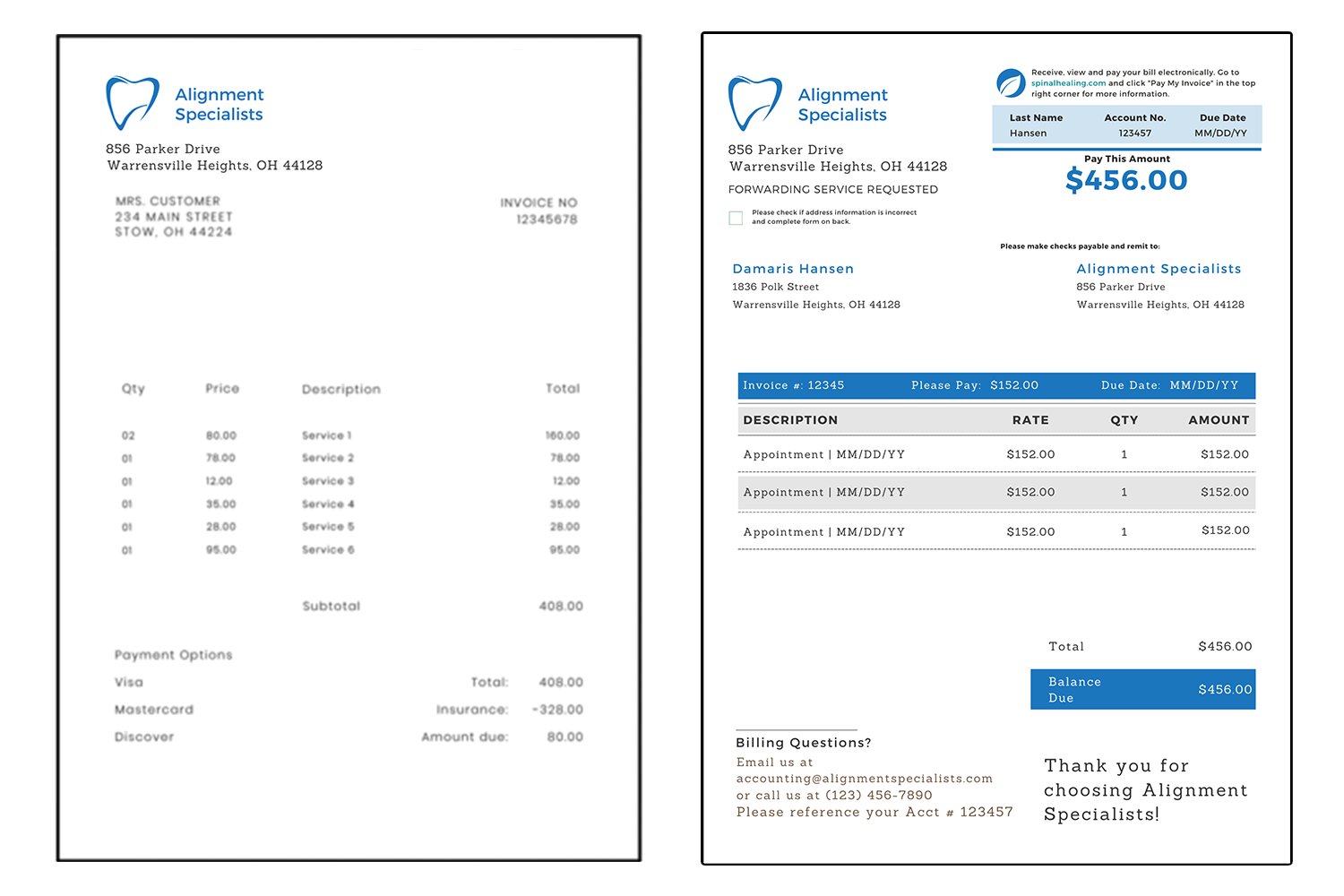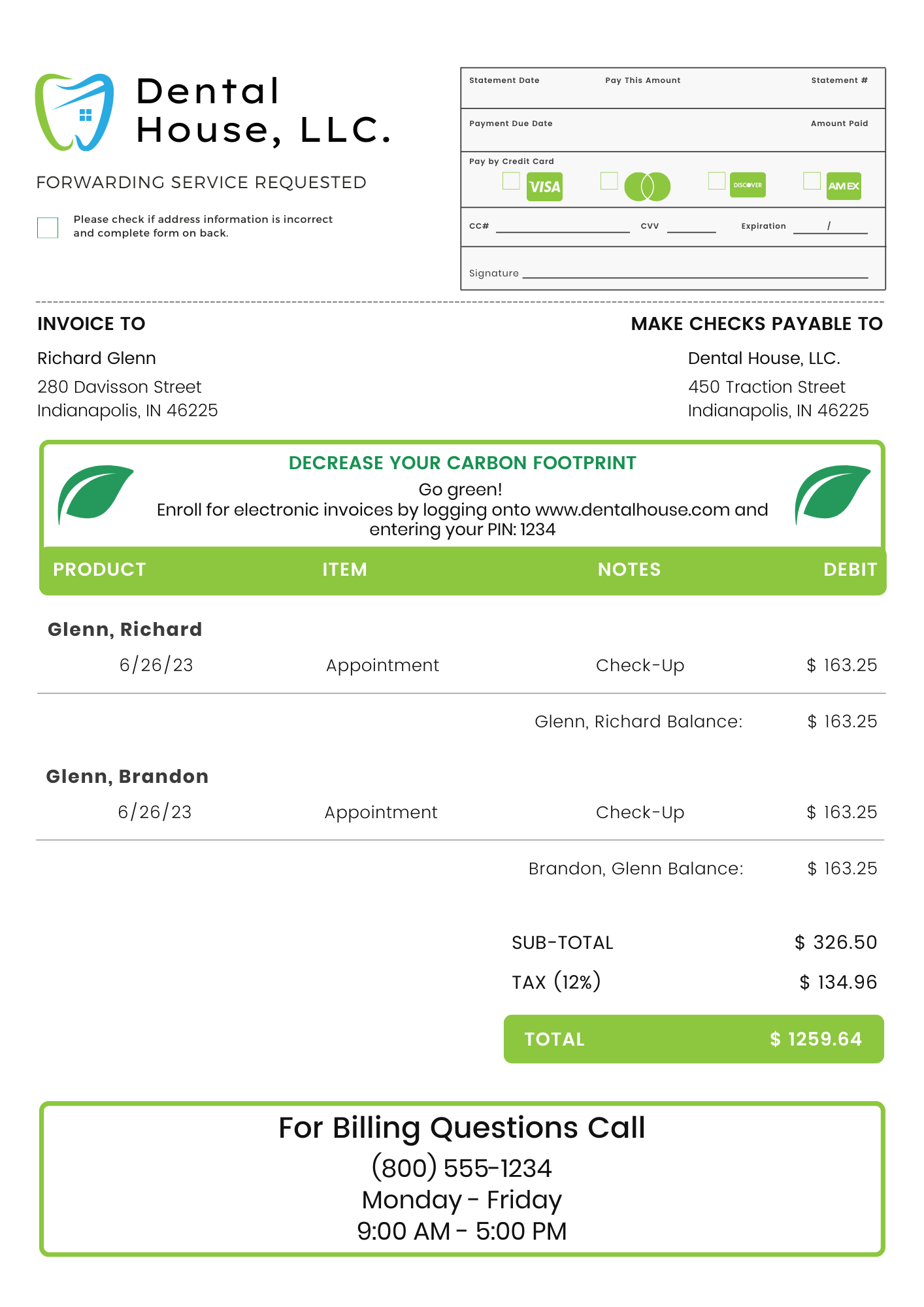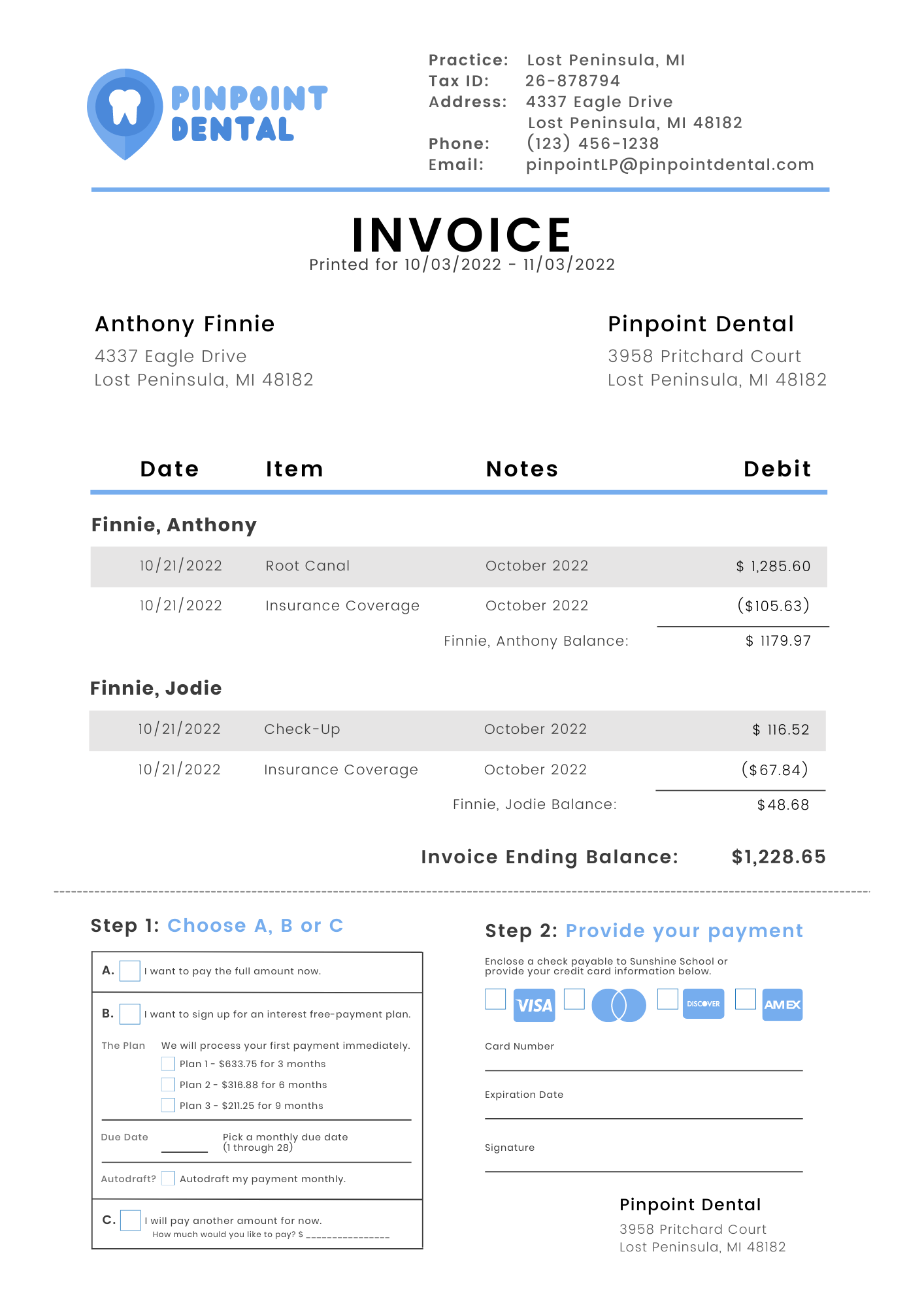88% of dentists worry about their patients’ ability to pay.
According to the same source, patient payment is the number one concern that dentists have related to their organization. It outranked acquiring patients by 8%.
In fact, 3 out of the top 5 concerns that dentists had related to their organization’s cash flow.
But why is patient payment the biggest concern for dentists?
To answer that question, we need to take a look at the cost associated with dental procedures.
According to Humana, the costs associated with dental procedures vary depending on what they are. For example, basic cleaning costs anywhere between $75-$200. Meanwhile, more intensive dental procedures like a molar root canal can reach up to a total cost of $1,500.
Now let’s shift to the patient landscape. After all, the cost of your dental services shouldn’t be the issue if most patients have insurance plans that cover most procedures. Yet, nearly 20% of dental patients self-pay, meaning they pay for their dental services out of their pocket.
Self-paying patients isn’t necessarily a bad thing from an industry level. They tend to shop around for their healthcare to find procedure costs that work best for them.
What is a problem, though, is the current consumer financial situation. As it stands today, 60% of US households cannot afford to pay an unexpected expense that’s over $1,000.
It appears that things are starting to get a little tricky. Let me throw another wrench into the equation.
40% of financial decision-makers report having skipped paying a bill in the last month. It’s not just your self-paying patients that you need to worry about.
So, what’s the solution? How can dentists (like yourself) worry less about their organization’s cash flow?
Well, patient payment starts with the billing statement. If your statements fail once they get into the hands of your patients, the chances of you getting paid plummet dramatically.
Here are 5 jaw-dropping dental billing statement templates that will boost your organization’s revenue.
Table of Contents
Template 1: What's On The Outside Matters
Before we even get into what the perfect dental billing statement that boosts your revenue looks like, we need to think about your patient’s mailing experience.
I’m willing to bet that you go through this same process.
The fact is, your patient doesn’t wake up every day thinking about the statement you sent through the mail. You might from an organizational standpoint since it has a direct effect on your bottom line, but they certainly aren’t.
Your patients go through their busy day at work like the rest of us. Once they get home, they check their mailbox, grab their massive pile of envelopes and spend the evening relaxing or shuttling their kids to extracurricular activities.
Although 41% of Americans look forward to checking their mail every day, the majority of people hold negative sentiments about receiving bills and letters from organizations in the mail. I don’t blame them.
But, what does that mean for you? I mean, a dental billing statement is a bill.
You need to stand out from the pile of mail.
The standard envelope for financial documents is a double-windowed #10 envelope. The main purpose of the windows is to easily provide the sending address and return address. Yet, they represent an opportunity for you as well.
Which of the two envelopes did your eyes gravitate toward in the image above?
The only different thing is that one includes a branded logo in the window that contains the practice’s address.
A change as subtle as that makes it that much easier for your patients to notice that you sent them something through the mail. That way, there’s a much lower chance that your patients overlook the bill you sent them in the giant pile of mail that you receive.
Template 2: Use Your Branding and Color
At this point, we haven’t even opened the envelope to see what’s inside. Let’s go ahead and do that.
The truth is, taking advantage of the double window and increasing the chances that your patient notices that you sent them a statement. But that’s only one part of the puzzle.
If they open their envelope only to find a poorly designed statement that’s hard to understand, they’re not going to spend more of their time trying to figure out how to pay you.
Yes, the patients that you send statements to owe you an outstanding balance. Yet, if they can’t figure out that balance within the first couple of seconds of looking at their bill, they’re going to move on.
Let’s do the same exercise as the previous section. Out of the two billing statements above, which of the two did your eyes naturally look at?
Although the bill on the left utilizes the double-window trick that I mentioned in the previous section, it’s hard to read, especially when it comes to figuring out how to pay the balance.
Meanwhile, the example on the right practically screams at you visually. Upon first glance, you immediately know the balance owed and how to pay.
A branded visual hierarchy goes a long way in helping your patients understand what they owe you and how to pay you.
Template 3: Remits With Pre-Paid Envelopes
Now that you have a well-designed dental billing statement that’s reflective of your practice and makes it easier to understand visually, the next aspect you have to worry about is payment.
For the sake of the point I’m going to make throughout this section, I’m going to assume that your practice accepts modern forms of digital payment. After all, almost 80% of all patients want to pay their statements electronically.
With that, though, you want to make sure that you’re not isolating your payment options.
You see, 40% of US consumers still pay bills via check. Thus, you want to make sure that your patients can still pay off their balance with you the moment they receive their statement.
How do you do that? Remits.
A remit or remittance is a returnable portion of a billing statement that recipients can use to select a payment method and return to you via mail.
All of the templates that I provide you with throughout this entire blog post use remits because they’re a standard aspect of invoicing.
Why are remits a standard? Two reasons.
First, they don’t isolate your payment options. A remit means that what you send includes a prepaid return envelope. Second, they further help in your efforts to collect from patients as soon as possible.
The idea is that your patients receive their billing statement, choose their payment preference on the remit and then send it back to you in the prepaid envelope.
They further your efforts to make it as convenient as possible for your patients to pay you the moment they receive their bill in the mail.
Template 4: Communication on The Statement
Your billing statement provides you with an opportunity to communicate with your patients beyond telling them how much they owe you.
In the world of finances, dunning letters get sent to customers to tell them the status of their balance. They’re like a second cousin to debt validation letters. Same energy.
Anyway, you can send a dunning letter-type communication and include it within your dental billing statement.
In this template, take a look at the text box that’s right above the detail table. That little box is the dunning message section of the statement that I’m referring to in this section.
It’s another small aspect to include within the bills you send your patients that packs a punch. If you want to stay true to the definition of a dunning message, you can provide your clients with updates on the status of their accounts.
However, you can also use dunning messages as a way to advertise upcoming events or encourage online billing enrollment.
Template 5: Affordability Through Plans
Do you remember during the introduction of this blog post when I broke down the cash flow problem that exists for many dentists?
Unfortunately, the cost of healthcare across the board is on the rise. That’s bad news, considering some of the statistics I threw at you earlier.
Although it would be great if you had 100% control over the costs associated with the services you provide, that’s not the case. So, what do you do?
Just because the costs of your services are increasing on average doesn’t mean you can’t come up with creative ways to make your services more affordable.
That’s where payment plans come in.
You see, payment plans make it easier for both you and your patients.
On the patient side, it provides them with the opportunity to pay off their balance with you using an amount that’s affordable to them.
On your side, payment plans allow you to more easily project your revenue and collect from accounts that wouldn’t have otherwise paid you.
This next template features a remit, but it’s on the bottom instead of the top like the others.
It provides a simple, step-by-step payment plan enrollment process for recipients to utilize and then send back to you.
Conclusion
By the end of this blog, you likely noticed how my recommendations focused on the smaller details of your dental billing statement templates.
The reality is that those small details make all the difference when trying to collect from your patients.
Odds are that you don’t include those details in the statements that you’re currently sending. Thus, you’re missing out on a massive opportunity to upgrade how your practice bills look in the name of making it easier to close outstanding balances.









